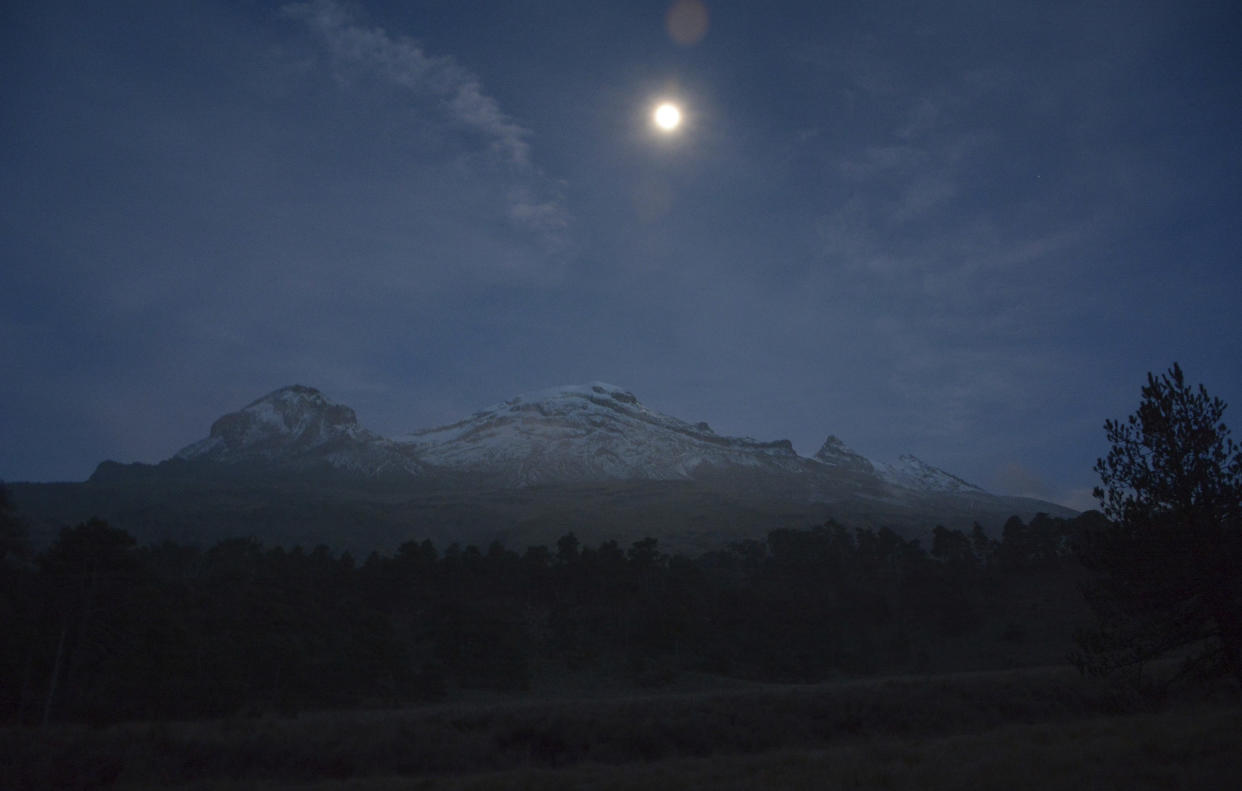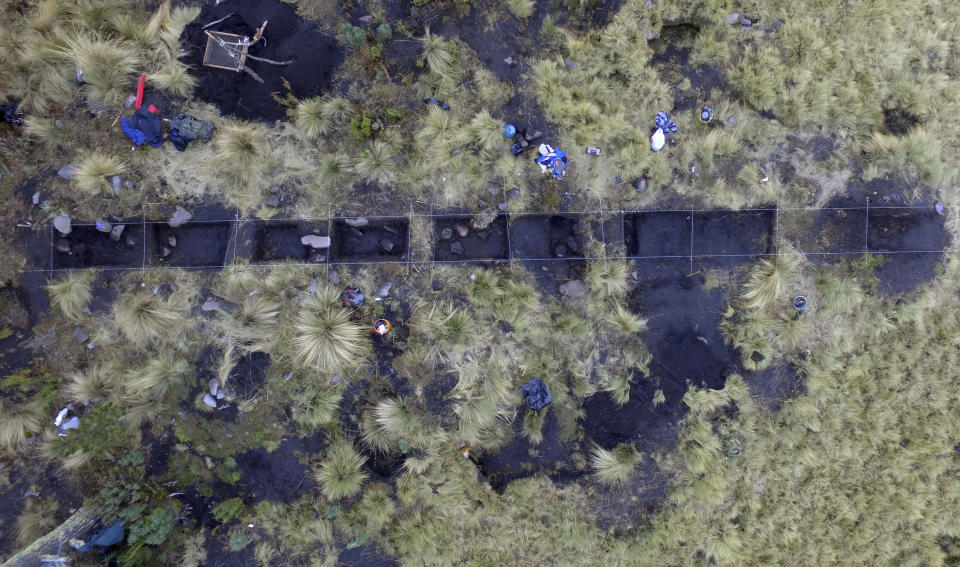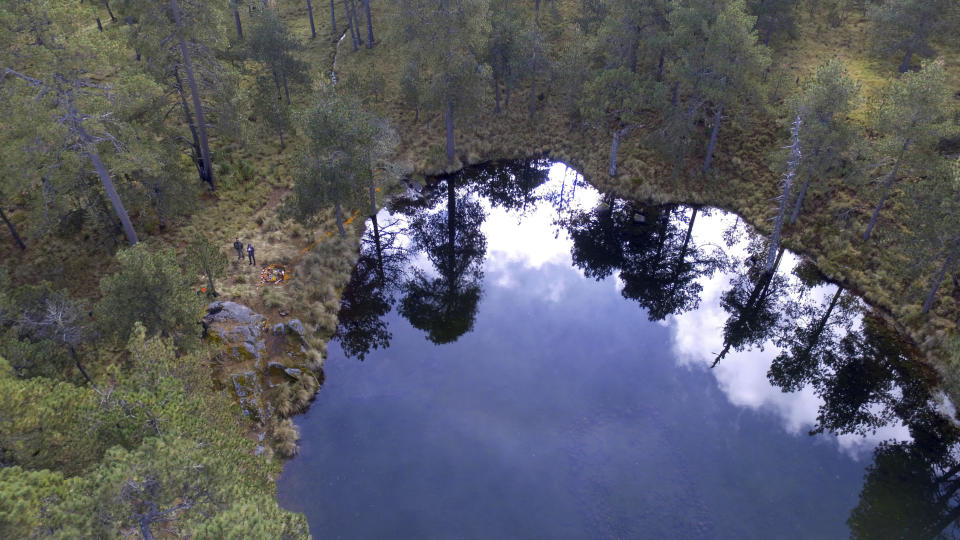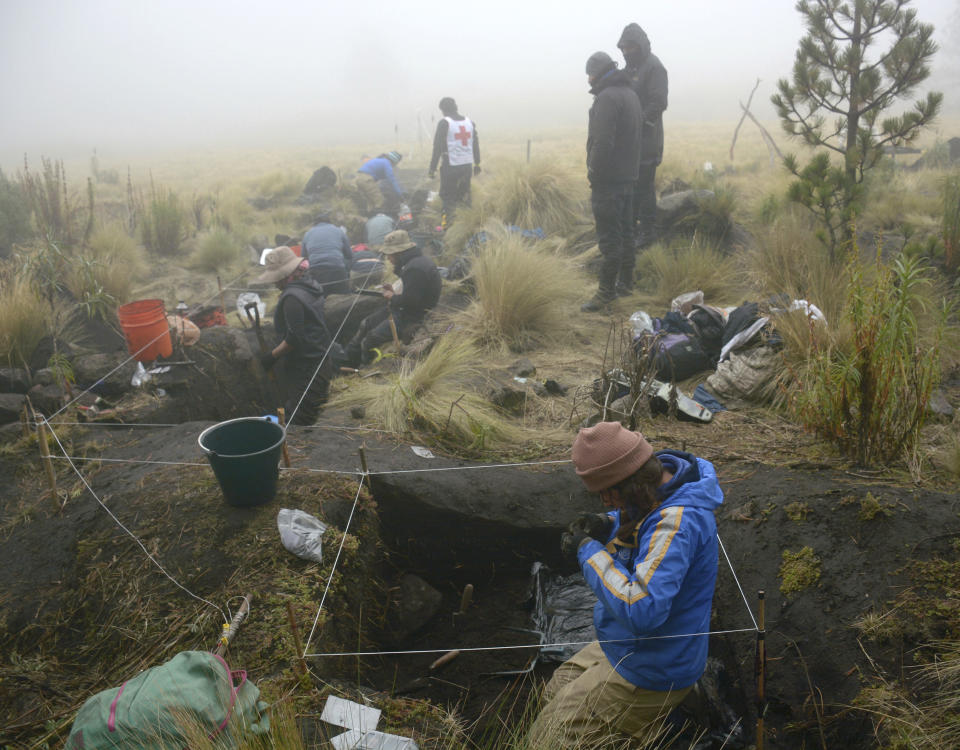Mysterious ‘stone shrine’ on Mexican volcano ‘is ancient model of the universe’

A strange arrangement of stones in a pond on the side of a Mexican volcano may have been built as an ancient model of the universe, researchers say.
The National Institute of Anthropology and History says the stone ‘tetzacualco’ – shrine – was built in a natural pond on the Iztaccihuatl volcano.
The researchers believe the stones may have been designed to appear to ‘float’ on the surface of the water – in tune with creation myths.
Most popular on Yahoo News UK
Ex-wife of ‘black cab rapist’ John Worboys ‘disgusted’ over prison release
£50,000 worth of donations to ‘homeless hero’ thief Chris Parker to be returned
This is how Donald Trump’s extraordinary comb-over actually works
Warning over Facebook Messenger video ‘which hijacks PCs to mine cryptocurrency’
Drunk shoplifter who sued police for being Tasered during his arrest loses ‘excessive force’ case
Mesoamerican myth says that Cipactli, the monster of the Earth, floated on the waters, and the sky and Earth were created from his body.
The 1,000 year old shrine was found 13,000 feet up the mountain.

‘The existence of a tetzacualco (shrine) in the middle of a natural pond and the optical effect that occurs when the water mirrors, from which it seems that the structure emanates, suggests that the place is the representation of a primeval time and space, a miniature model of the universe,’ the researchers said.


Iris Hernandez, an archaeologist working on the project, says it seems that there was a ritual control of water from nearby springs to irrigate the pond in order to cause a visual effect in which it appears that the structure and mounds of stone float on the water surface, which in turn reflects the surrounding passage.
Hernandez said, ‘These visual effects, in addition to the characteristics of the elements that make up the site and the relationship they have with each other, make us suppose that Nahualac could represent a microcosm that evokes the primitive waters and the beginning of the mythical time-space’.

 Yahoo News
Yahoo News 

